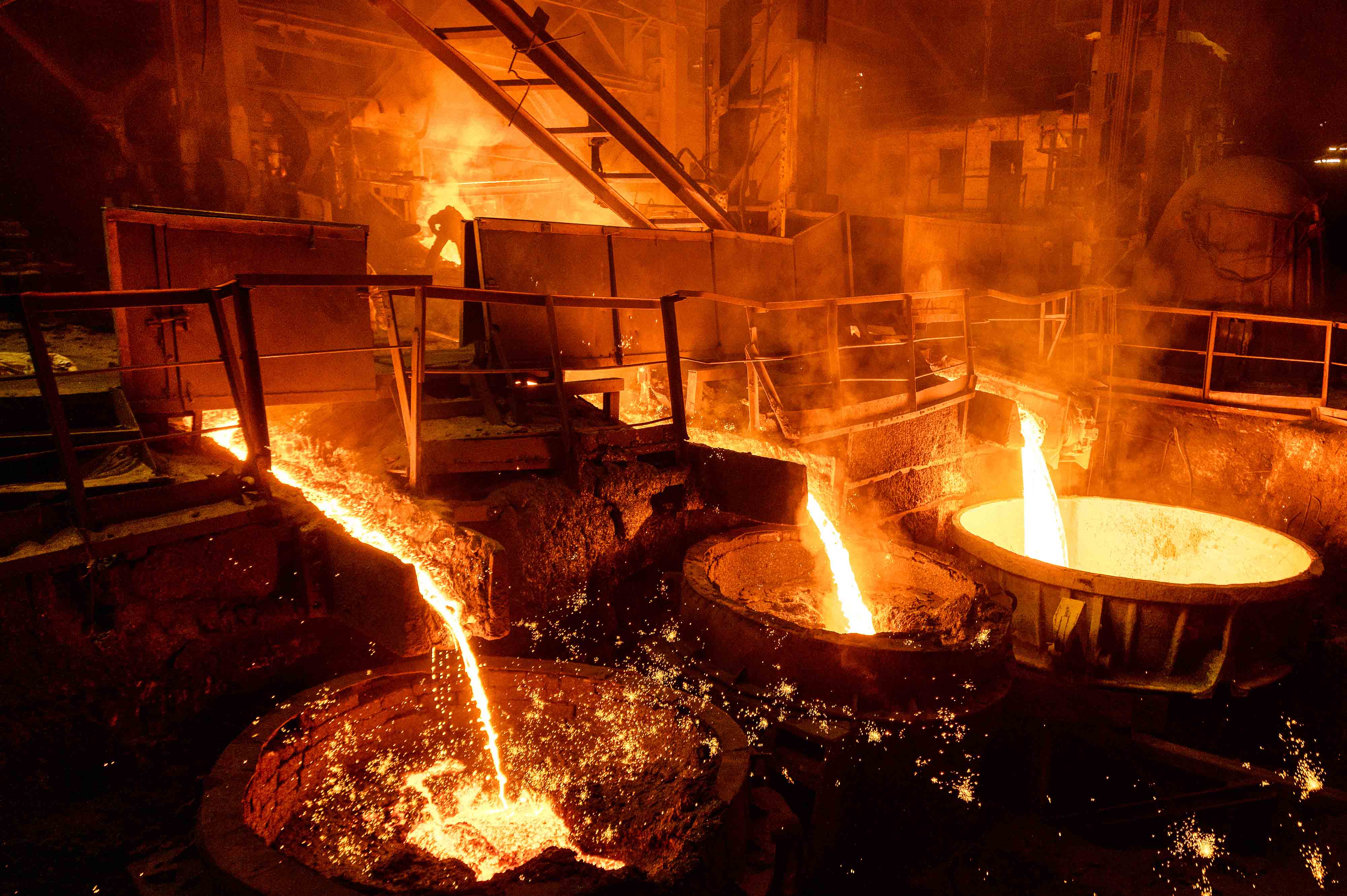28 Elements That Influence Steel: Their Effects on Properties and Performance
2025-09-17 16:04:53 hits:0
I. Introduction: Why Do Elements Determine Steel Properties?
Steel is an alloy material with iron (Fe) as the matrix. Its properties depend not only on iron itself but are also influenced by fundamental elements such as carbon (C), silicon (Si), and manganese (Mn). By adding alloying elements like chromium (Cr), nickel (Ni), and molybdenum (Mo), steel can acquire special properties, including corrosion resistance, wear resistance, and high-temperature resistance. Meanwhile, impurity elements and trace elements also have a profound impact on the comprehensive properties of steel. This article systematically introduces the functions of different elements on steel properties and their typical applications.

II. Fundamental Elements: Laying the Foundation for Steel Properties
2.1 Carbon (C): The Core Regulator of Steel Properties
Carbon is the most crucial element in steel. Its content directly determines the hardness, strength, plasticity, and toughness of steel. Low-carbon steel (C<0.25%) features excellent toughness and good weldability. Medium-carbon steel (0.25–0.6%) combines strength and toughness, making it suitable for manufacturing mechanical parts and automotive axles. High-carbon steel (>0.6%) significantly enhances hardness and wear resistance, which is widely used in tools, springs, and rails.
2.2 Silicon (Si): Dual Roles in Deoxidation and Property Enhancement
Silicon mainly serves as a deoxidizer in steel. It can also enhance the strength and hardness of steel and improve its elastic properties, playing a vital role in electrical steel and spring steel. However, when the silicon content is too high, the toughness and weldability of steel will decline.
2.3 Manganese (Mn): Performance Improvement and Suppression of Harmful Effects
Manganese can increase the strength and hardness of steel and significantly improve its hardenability. It reacts with sulfur to form MnS, reducing the harmful effects of sulfur. In high-manganese steel, with a manganese content exceeding 10%, the steel exhibits extremely high wear resistance and impact toughness, widely applied in the mining machinery field.
III. Main Alloying Elements: Endowing Steel with Special Properties
3.1 Chromium (Cr): Key to Improving Hardness and Corrosion Resistance
Chromium can enhance the hardness, strength, and wear resistance of steel. When its content reaches over 12%, it significantly improves the corrosion resistance of steel, which is a key characteristic of stainless steel.
3.2 Nickel (Ni): Optimizing Toughness and Corrosion Resistance
Nickel can improve the toughness, corrosion resistance, and low-temperature properties of steel. Austenitic stainless steels (such as 304 and 316), which contain nickel, perform excellently in chemical and marine environments.
3.3 Molybdenum (Mo): Enhancing Hardenability and High-Temperature Performance
Molybdenum can improve the hardenability and high-temperature strength of steel and effectively prevent temper brittleness. It is commonly used in heat-resistant steel and high-strength structural steel.
3.4 Vanadium (V): Grain Refinement and Strength Enhancement
Vanadium can significantly refine the grains of steel and improve its strength and wear resistance by forming carbonitrides. It is indispensable in high-speed steel and high-strength alloy steel.
3.5 Tungsten (W): Endowing Steel with Red-Hardness
Tungsten endows steel with good red-hardness, enabling it to maintain hardness at high temperatures. It is widely used in the manufacturing of high-speed steel cutting tools.
3.6 Cobalt (Co): Improving Heat Resistance and Magnetic Properties
Cobalt can enhance the heat resistance and magnetic properties of steel, commonly found in high-speed steel and permanent magnetic alloys.
3.7 Aluminum (Al): Deoxidation and Enhancement of High-Temperature Oxidation Resistance
Aluminum is a common deoxidizer. It can also refine grains and enhance the high-temperature oxidation resistance of steel, widely applied in corrosion-resistant steel and heat-resistant steel.
3.8 Copper (Cu): Enhancing Atmospheric Corrosion Resistance
Copper can significantly enhance the atmospheric corrosion resistance of steel. An appropriate amount of copper can form a protective oxide film on the steel surface, used in weathering steel. But excessive copper content may cause hot shortness in steel.
3.9 Titanium (Ti): Preventing Intergranular Corrosion in Stainless Steel
Titanium can form stable compounds with carbon and nitrogen, preventing intergranular corrosion in stainless steel and improving grain refinement. A typical application is stainless steel 321.
3.10 Niobium (Nb): Grain Refinement and Strength Improvement
Niobium can refine grains and enhance the strength and heat resistance of steel. It is a key element in high-strength low-alloy (HSLA) steel and pipeline steel.
3.11 Special High-Temperature-Resistant Elements (Zr, Hf, Ta, Re)
These elements can significantly improve the high-temperature strength and creep resistance of steel, mainly applied in aerospace engines, gas turbines, and nuclear energy equipment.
IV. Impurity Elements: Dual-Faced Influences on Steel Properties
4.1 Phosphorus (P): Coexistence of Performance Improvement and Cold Shortness Risk
Phosphorus can increase the strength and corrosion resistance of steel but greatly reduces its plasticity and toughness, prone to causing cold shortness. Through reasonable control and element combination, its positive effects can be utilized in specific fields.
4.2 Sulfur (S): From Harmful to Special-Purpose Transformation
Sulfur is usually a harmful element, causing hot shortness and cracks in steel. However, in free-cutting steel, an appropriate amount of sulfur can improve the machinability.
4.3 Nitrogen (N): Beneficial in Small Amounts, Harmful in Excess
Small amounts of nitrogen can refine grains and enhance the strength of steel, but excessive nitrogen may cause age brittleness. In nitrided steel, nitrogen can significantly increase the surface hardness.
4.4 Oxygen (O) and Hydrogen (H): Harmful Impurities in Steel
Oxygen and hydrogen are generally regarded as harmful impurities. Oxygen forms inclusions, reducing the toughness of steel. Hydrogen may lead to hydrogen embrittlement, causing sudden fracture of steel under stress. Therefore, their contents must be strictly controlled during the steel production process.
V. Trace and Special Elements: Small Contents, Big Impacts
5.1 Boron (B): Trace Element Significantly Improving Hardenability
Boron is a crucial trace element. Even a content of only a few parts per million can significantly improve the hardenability of steel, commonly used in automotive steel and low-alloy high-strength steel.
5.2 Tin (Sn), Lead (Pb), Bismuth (Bi), Antimony (Sb)
These elements usually have adverse effects on steel, causing hot shortness. But in free-cutting steel, adding an appropriate amount of lead or bismuth can instead improve the machinability and extend the tool life.
VI. Conclusion: Elements Collaboratively Shaping Steel Properties
From these effects, it is clear that steel is not just a simple iron–carbon alloy but a carefully balanced system of multiple elements. The presence, quantity, and interactions of each element determine the final properties of steel. By tailoring alloying elements and controlling impurities, metallurgists can design steels with highly specific characteristics, ensuring that they meet the diverse requirements of modern industries ranging from construction and transportation to energy and aerospace.
Contact Us
At Tiegu, we specialize in supplying high-quality pig iron and also provide cast iron parts and cast steel parts tailored to your needs. Whether you are sourcing raw materials or finished castings, our team is dedicated to delivering reliable products and professional service.
👉 Visit us at: www.tieguexport.comto learn more or get in touch with us for your specific requirements.

 en
en  fra
fra  de
de  ru
ru  ara
ara  gle
gle  it
it  jp
jp  kor
kor  th
th  zh
zh 


